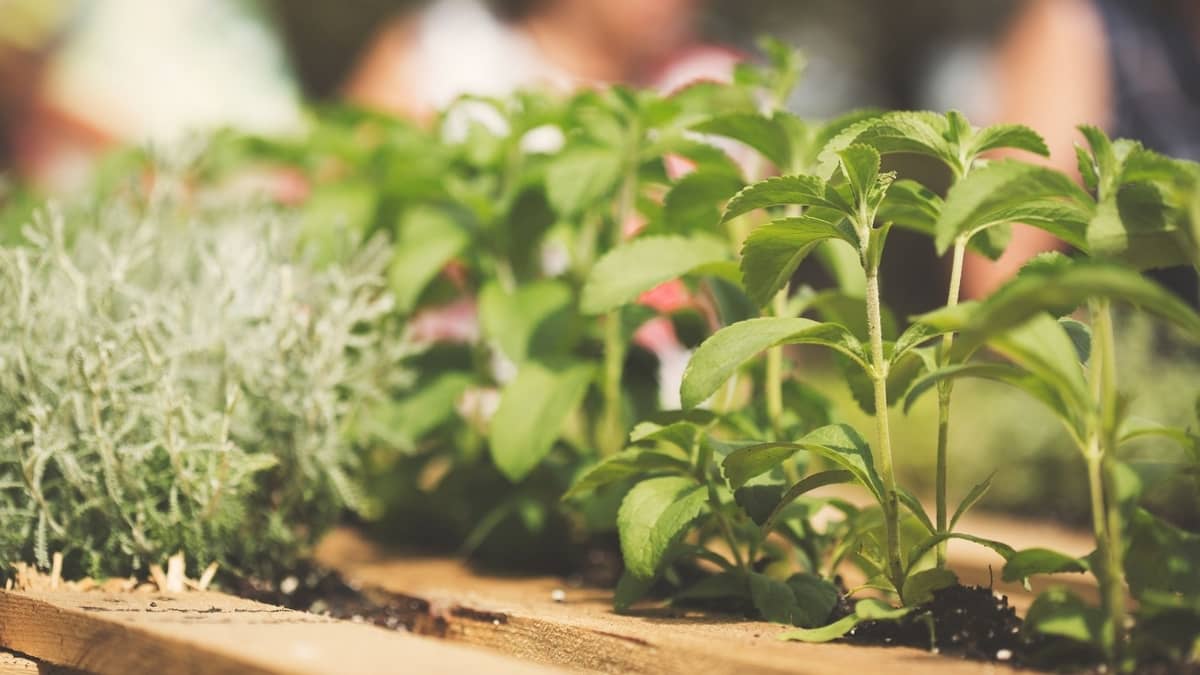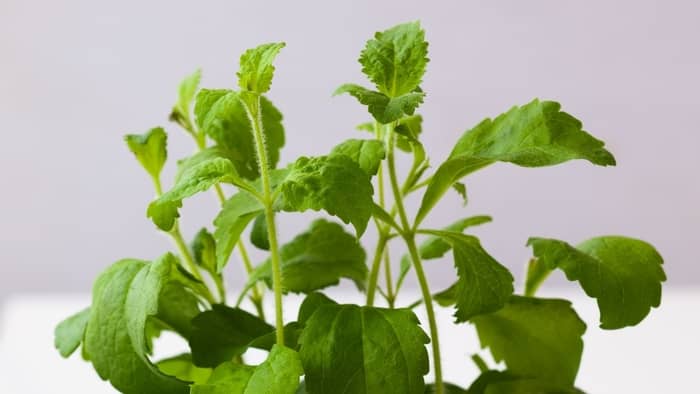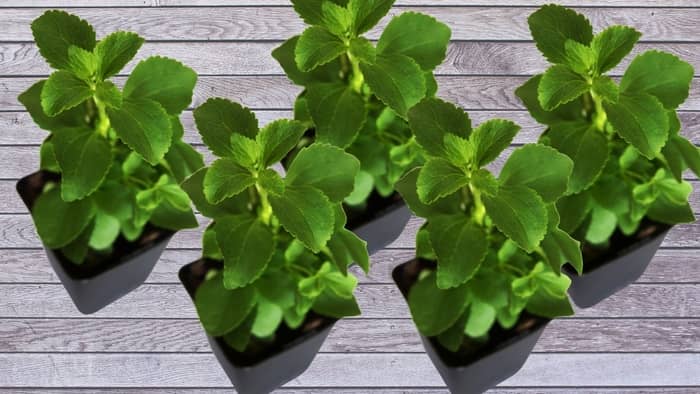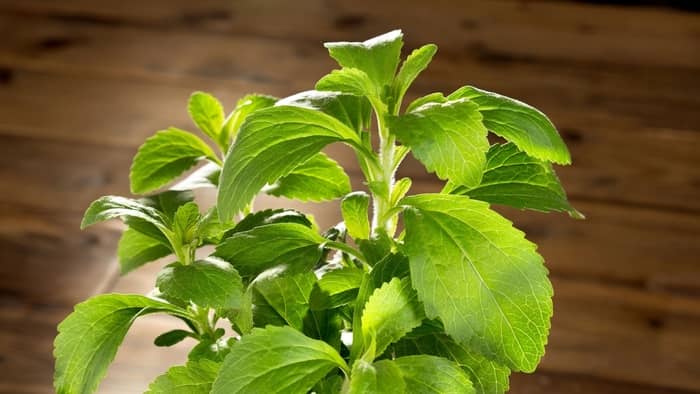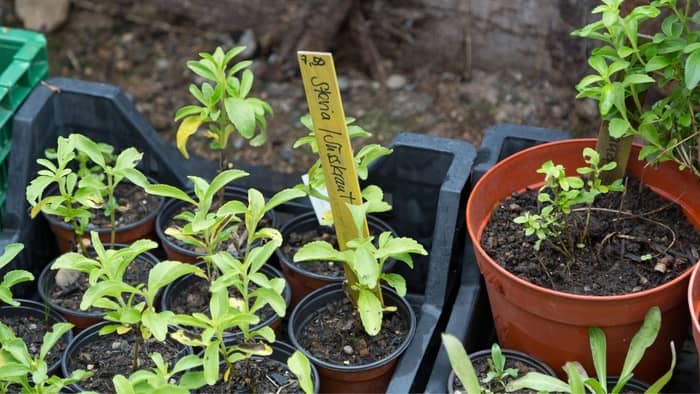Last Updated on December 30, 2021 by Guillermina
Wondering can you grow Stevia indoors? Click to find out all the details about this healthier alternative to sugar.
Stevia has been declared a healthier alternative to sugar and thus gained worldwide popularity in the early 21st century. It is zero calories, zero carbohydrates, and a non-glycemic plant. Today it is most commonly used to sweeten teas, coffee, sherbet, yogurt, salad dressings, and fruit.
We know it can be grown in gardens, but many of us question can you grow Stevia indoors. Therefore, keep reading to find out.
About The Plant
Stevia (Stevia rebaudiana) is often called a sweet leaf. This plant comes from the aster family (Asteraceae) and is native to Paraguay. This plant is grown for its sweet-tasting leaves. Their taste comes from chemicals known as steviol glycosides. It can be used fresh or dried to sweeten beverages or desserts or can be commercially processed into powdered noncaloric sweeteners.
Did you know that Steviol glycosides (stevioside and rebaudioside A) can be more than 300 times sweeter than table sugar? Best of all it is nonglycemic, ie it has absolutely no effect on blood glucose levels. Guaraní people have used this plant for over 1500 years to sweeten yerba maté and other teas. Its leaves are also widely used in folk medicine.
Stevia is a perennial herb that usually reaches 1–2.5 feet (30.5–80 cm) in height. Its leaves are 1 inch (2.5 cm) long with a prominent midrib; also they are arranged oppositely along the stems. When it comes to flowers, they are small tubular and have five white petals that are borne in terminal clusters.
Where Does Stevia Grow
There are three ways to grow a Stevia plant.
- Indoor cultivation from seed.
- Planting rooted cuttings.
- Cloning with rooted cuttings.
This time we will discuss the two most popular ways. Therefore, keep reading to find out.
How To Grow Stevia From Seed
These are the basic rules for growing Stevia plants from seed.
- Choose a soil or potting mix that is rich with organic matter, and then fill containers to about an inch below the top.
- Sow Stevia seeds about ¼” deep and cover them with the growing substrate.
- Stevia needs a lot of sun to succeed. Try placing it in a room that receives at least six hours a day of direct sunlight. Also, keep the ambient temperature above 70 ℉.
- Keep the soil moist. Make sure it is never waterlogged.
- When the seedlings reach a height of 2 to 3 inches, thin them out by transplanting them into other pots.
Propagation By Stem Cuttings
- For propagation by stem cuttings follow these rules:
- Cut about a 4-inch piece of stem from the plant. Then remove the leaves from the bottom 2 inches of the cuttings.
- Dip the cut end of the stem into liquid or powdered rooting hormone.
- Place the cuttings in moist sand, perlite or vermiculite.
- After about 3 to 4 weeks, transplant the cuttings into a pot. Don’t forget to get quality potting soil.
Growing Conditions
Given that it is native to Brazil and Paraguay, the Stevia plant can thrive only in places with warmer climates and hardiness zones 9 or warmer. So, for all those who have wondered if you can grow Stevia indoors, the answer is yes. Their propensity to subtropical and tropical climates makes them ideal for indoor cultivation.
Soil
Try to provide it with well-drained, fertile soil. It would be best to choose a rich growing medium, such as potting mix or compost-modified soil. Since such soil can be inconvenient because it is difficult to retain water, you can apply mulch to retain moisture.
Sunlight
Try to place her in full-sun locations with 6 to 8 hours of direct sunlight daily. It would be ideal to place it in rooms with a window facing south or west. If you can’t provide them with regular sunbathing, it’s best to buy artificially growing light.
This will help them grow successfully and healthily. In addition, regular sun exposure will help them perform the process of photosynthesis. This process converts carbon dioxide and water into sugar used for food.
Temperature
The Stevia plant prefers temperatures above 70 ℉. Therefore, try to avoid the night temperature falling below 50 ℉ or the day temperature rising above 85 ℉. Such extreme temperature variations slow down the growth of plants and endanger their health.
Water
Stevia doesn’t tolerate completely dry soil and soggy soil. Therefore, it would be best to avoid both. Keep the soil evenly moist. You will ensure this with regular soil inspections and light watering.
Also, try to provide drainage so that the roots don’t sit in the water. You can even add a few inches of gravel under the bowl. This will prevent the water from standing in the pot.
Propagation
If you are planning to have an annual harvest, try propagating your Stevia plant. The process looks like this: trim off stems, and then dip them in a rooting hormone. Then place them in for two to three weeks in a rooting medium. After that, simply plant them in a pot with good drainage.
Insects, Parasites & Pests
The Stevia plant is prone to attacks by aphids, spider mites, and mealybugs. Try to conduct regular inspections, especially even under the leaves and around the ground.
If you find them, spray them with a mild insecticide. However, if you plan to consume the Stevia leaves use organic, non-toxic spray.
Tips For Harvesting Your Stevia Plants
Harvest leaves early in the day. This will preserve the best taste.
Use sharp, sterilized scissors or even your fingernails for harvesting.
If your plant has flowers, wait a few days to harvest.
It would be best to store dried leaves in an airtight container.
In Conclusion
The answer to the question “can you grow Stevia indoors” is yes!
The Stevia plant produces leaves full of super-sweet compounds that are used to sweeten teas and beverages around the world. It is especially suitable for diabetics and people on a diet because, unlike honey, maple syrup, agave, or molasses, this natural sweetener is not metabolized in the body and has zero calories.
Let’s get growing!
Read more about Tips For Growing Avocado Indoors Successfully

